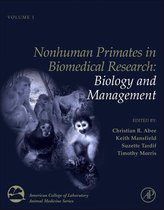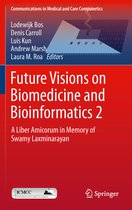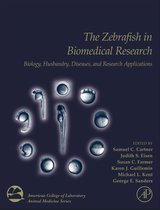The Baboon in Biomedical Research
- Engels
- Hardcover
- 9780387759906
- 21 november 2008
- 391 pagina's
Samenvatting
Building on the foundation of two earlier volumes, The Baboon in Biomedical Research returns in an updated edition that presents the variety of uses and the importance of the baboon in biomedical research today. With contributions from leading researchers who use the baboon model, the new edition, edited by John L. VandeBerg, Suzette D. Tardif, and Sarah Williams-Blangero, provides a cogent introduction to this nonhuman primate model and serves as a valuable guide for researchers as well as laboratory animal veterinarians.
The volume begins with a chapter on the baboon gene map, the first genetic linkage map developed for any nonhuman primate species. Subsequent chapters present the results of decades of research on basic biological characteristics of baboons: microbiology, reproductive biology, growth and development, behavior, and spontaneous pathology. The remaining chapters summarize the scientific contributions of baboons as models of human diseases or physiological or developmental characteristics, including neonatal lung disease, dental development, dyslipidemia and atherosclerosis, pregnancy, ingestive behaviors, infant nutrition, alcoholic liver disease, drug abuse, neuroimaging, epilepsy, and xenotransplantation. The baboon already has a 50-year history of significant contributions as a model for human states of health and disease. This volume highlights the exciting research that is currently being conducted with this animal model and suggests future directions for the baboon in biomedical research.
Nonhuman primates have played critical roles in biomedical research, and they are among the few animals whose use in research continues to increase. The scienti?c value of nonhuman primates derives from their close phylogenetic proximity to man and their consequent anatomic, physiologic, and genetic similarities to man. Only nonhuman primates can provide adequate models for many complex physiological and disease processes of humans. The baboon is a relative newcomer to the repertoire of nonhuman primates used in biomedical research. However, in less than 50 years since its ?rst use in the U. S. , it has become one of the most popular laboratory primate species. It is larger than the other widely used monkey species, making it advantageous for many types of experiments and technological developments. It is extraordinarily hardy and highly fecund in captivity. It closely resembles humans in a variety of physiological and disease processes, such as cholesterol metabolism, early stages of atherosclerosis, and alcoholic liver disease. Its chromosomes closely resemble those of humans, and many genes of the two species lie in the same chromosomal order. Among all primates, baboons are the most widely used models for the genetics of susceptibility to complex diseases and they are the ?rst nonhuman primate for which a framework genetic linkage map was established. In addition, the baboon genome is currently being sequenced, and as a result the utility of this species for biomedical research will be dramatically increased.
Productspecificaties
Inhoud
- Taal
- en
- Bindwijze
- Hardcover
- Oorspronkelijke releasedatum
- 21 november 2008
- Aantal pagina's
- 391
- Illustraties
- Nee
Betrokkenen
- Hoofdauteur
- Sarah Williams-Blangero
- Tweede Auteur
- Sarah Williams-Blangero
- Co Auteur
- Suzette D. Tardif
- Hoofdredacteur
- John L. Vandeberg
- Tweede Redacteur
- Sarah Williams-Blangero
- Co Redacteur
- Suzette D. Tardif
- Hoofduitgeverij
- Springer-Verlag New York Inc.
Overige kenmerken
- Editie
- 2009 ed.
- Extra groot lettertype
- Nee
- Product breedte
- 165 mm
- Product hoogte
- 19 mm
- Product lengte
- 248 mm
- Studieboek
- Nee
- Verpakking breedte
- 165 mm
- Verpakking hoogte
- 19 mm
- Verpakking lengte
- 248 mm
- Verpakkingsgewicht
- 708 g
EAN
- EAN
- 9780387759906
Je vindt dit artikel in
- Categorieën
- Taal
- Engels
- Boek, ebook of luisterboek?
- Boek
- Studieboek of algemeen
- Algemene boeken
- Beschikbaarheid
- Leverbaar
- Prijs inclusief verzendkosten, verstuurd door bol
- Ophalen bij een bol afhaalpunt mogelijk
- 30 dagen bedenktijd en gratis retourneren
- Dag en nacht klantenservice
Rapporteer dit artikel
Je wilt melding doen van illegale inhoud over dit artikel:
- Ik wil melding doen als klant
- Ik wil melding doen als autoriteit of trusted flagger
- Ik wil melding doen als partner
- Ik wil melding doen als merkhouder
Geen klant, autoriteit, trusted flagger, merkhouder of partner? Gebruik dan onderstaande link om melding te doen.








